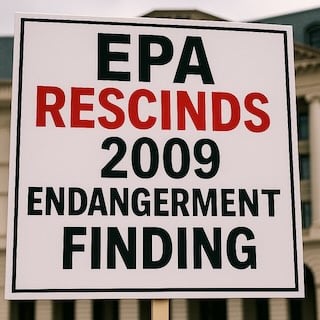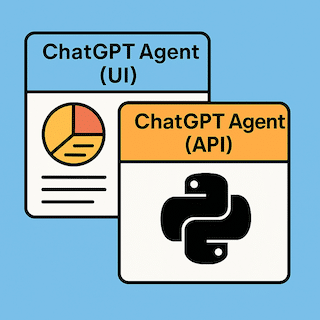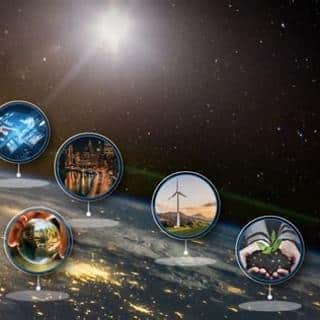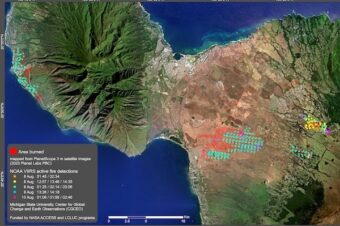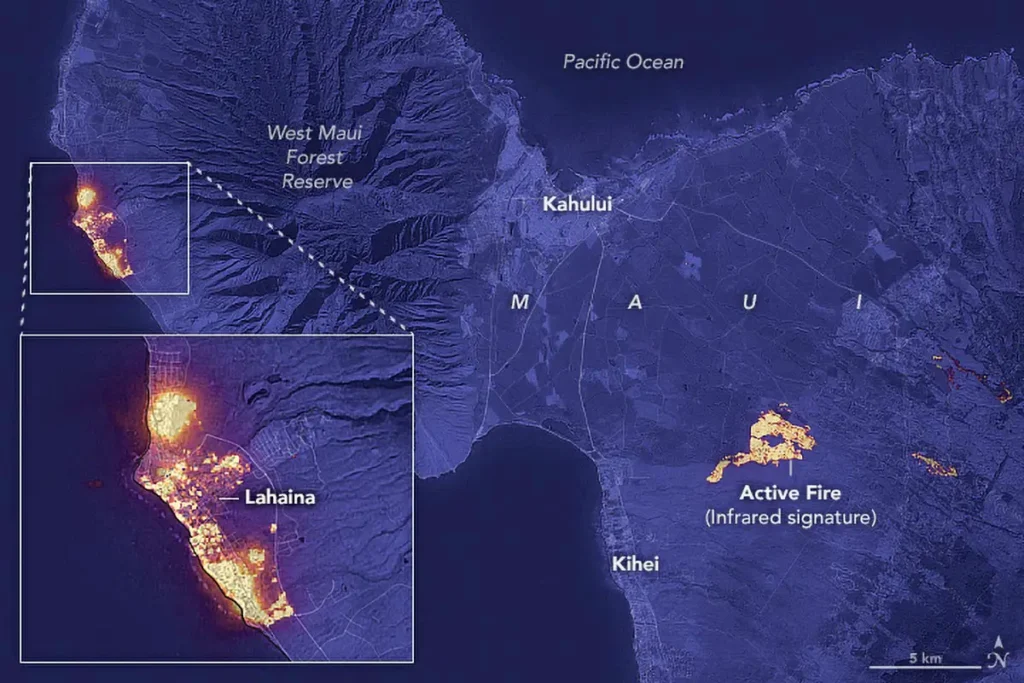
In August 2023, the island of Maui in Hawaii faced a series of devastating wildfires that not only caused significant environmental damage but also raised numerous questions about the underlying factors contributing to such disasters. Recent scientific studies have provided valuable insights into the meteorological conditions, environmental impacts, and public health consequences of these wildfires. This blog post aims to delve deeper into these findings, offering a comprehensive understanding of the events and their implications.
Meteorological Conditions
One of the key studies published in the journal Weather and Forecasting focuses on the meteorological conditions that led to the wildfires. The paper, titled “The Meteorology of the August 2023 Maui Wildfire,” highlights several critical factors that contributed to the disaster. Firstly, the region experienced an unusual combination of high temperatures, low humidity, and strong winds. These conditions created an ideal environment for wildfires to ignite and spread rapidly. The study also points to the role of climate change in exacerbating these conditions. Rising global temperatures have led to more frequent and intense heatwaves, which, in turn, increase the likelihood of wildfires.
The study further explains that the Pacific region, including Hawaii, has been experiencing shifts in weather patterns due to climate change. These shifts have resulted in prolonged dry spells and reduced rainfall, making the vegetation more susceptible to fires. Additionally, the presence of strong trade winds during the wildfire period significantly contributed to the rapid spread of the flames. These winds, combined with the dry conditions, created a perfect storm for the wildfires to escalate quickly.
Environmental Factors
Another significant contribution to understanding the Maui wildfires comes from an article in Nature titled “Hawaii Wildfires: Did Scientists Expect Maui to Burn?” This article explores the broader environmental and land-use factors that made Maui particularly vulnerable to wildfires. One of the primary issues identified is the change in land use over the years. Large areas of native vegetation have been replaced with non-native grasses, which are more flammable. These grasses, such as guinea grass and fountain grass, have a higher propensity to catch fire and spread it rapidly compared to native plants.
The article also discusses the abandonment of agricultural lands, which has led to an accumulation of dry vegetation, providing ample fuel for fires. As traditional farming practices declined, these lands were left unmanaged, allowing invasive species to take over. These invasive species not only alter the natural fire regime but also increase the frequency and intensity of wildfires. The combination of non-native grasses and abandoned agricultural lands created a highly flammable landscape, making Maui more susceptible to wildfires.
Furthermore, the article highlights the role of invasive species in altering the fire regime of the region. Invasive plants often outcompete native species, leading to a reduction in biodiversity and changes in the ecosystem’s structure. These changes can make the environment more prone to wildfires, as invasive species tend to be more flammable and can create continuous fuel loads that facilitate the spread of fires.
Public Health Impacts
The University of Hawaii Economic Research Organization (UHERO) conducted a study titled “Public Health Report: Initial Findings from the Maui Wildfire Exposure Study,” which examines the health impacts of the wildfires on the local community. The report highlights several immediate and long-term health concerns. In the short term, residents were exposed to high levels of smoke and particulate matter, leading to respiratory issues and exacerbating pre-existing conditions such as asthma and chronic obstructive pulmonary disease (COPD).
The study also raises concerns about the long-term mental health impacts of the wildfires. The trauma of experiencing such a disaster can lead to increased anxiety, depression, and post-traumatic stress disorder (PTSD) among those affected. The report emphasizes the need for mental health support and resources for the community to help them cope with the aftermath of the wildfires.
Additionally, the study points out that the wildfires have disrupted the local healthcare system, making it challenging for residents to access medical care. The destruction of infrastructure and the displacement of people have strained healthcare resources, further exacerbating the public health crisis. The report calls for a coordinated response to address both the immediate and long-term health needs of the affected population.
Conclusion
The August 2023 wildfires in Maui serve as a stark reminder of the complex interplay between climate change, land use, and public health. The findings from these scientific studies underscore the need for a multifaceted approach to wildfire management and prevention. Addressing climate change, implementing better land-use practices, and enhancing public health preparedness are crucial steps in mitigating the impact of future wildfires.
As we move forward, it is essential to learn from these events and apply this knowledge to protect vulnerable communities and ecosystems. The research conducted on the Maui wildfires provides valuable insights that can guide policy decisions and community actions aimed at reducing the risk and impact of wildfires in the future.
One of the key takeaways from these studies is the importance of proactive measures to prevent wildfires. This includes managing vegetation, restoring native plants, and reducing the presence of flammable invasive species. Additionally, there is a need for better land-use planning to ensure that abandoned agricultural lands are properly managed and do not become fire hazards.
Another critical aspect is the role of community awareness and preparedness. Educating residents about the risks of wildfires and providing them with the tools and resources to protect their homes and properties can significantly reduce the impact of such disasters. Community-based fire management programs and early warning systems can also play a vital role in mitigating the effects of wildfires.
In conclusion, the August 2023 Maui wildfires highlight the urgent need for a comprehensive approach to wildfire management. By understanding the factors that contributed to the wildfires and implementing effective strategies to address them, we can better prepare for and respond to similar events in the future. This will not only protect our communities and natural landscapes but also ensure a more resilient and sustainable future for all.
View a false color infrared image created using the near-infrared, red, and green channels from the Planet instrument allowing for the ability to see Lahaina before and after impacted from the wildfires. The near-infrared gives the ability to see through thin clouds. Healthy vegetation is shown as red, water is in blue.
- The Meteorology of the August 2023 Maui Wildfire: This paper, published in the journal Weather and Forecasting, discusses the meteorological conditions that contributed to the wildfires in Maui1.
- Hawaii Wildfires: Did Scientists Expect Maui to Burn?: An article in Nature explores the factors that led to the wildfires, including climate change, land use, and weather patterns2.
- Public Health Report: Initial Findings from the Maui Wildfire Exposure Study: This report from the University of Hawaii Economic Research Organization (UHERO) examines the environmental and health impacts of the wildfires on the Maui community3.


